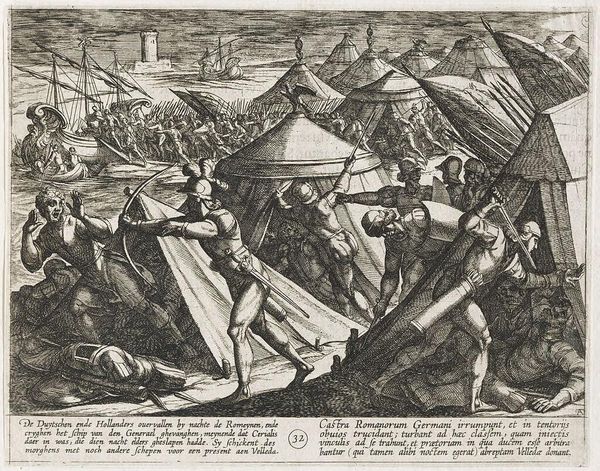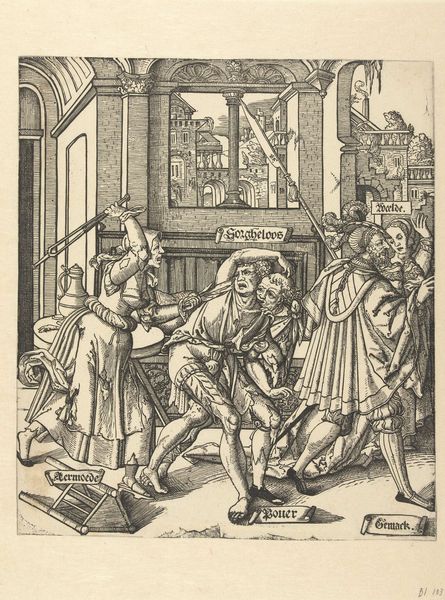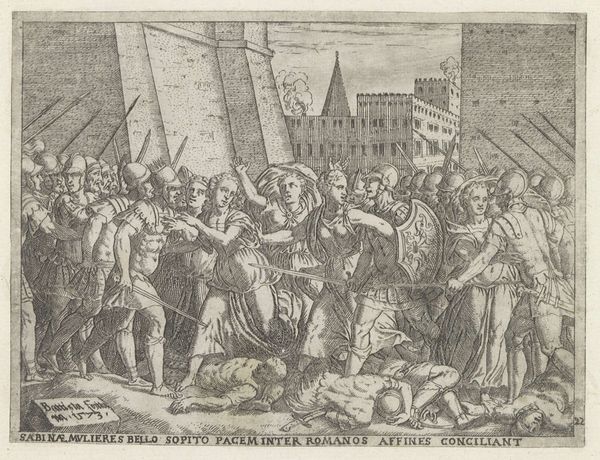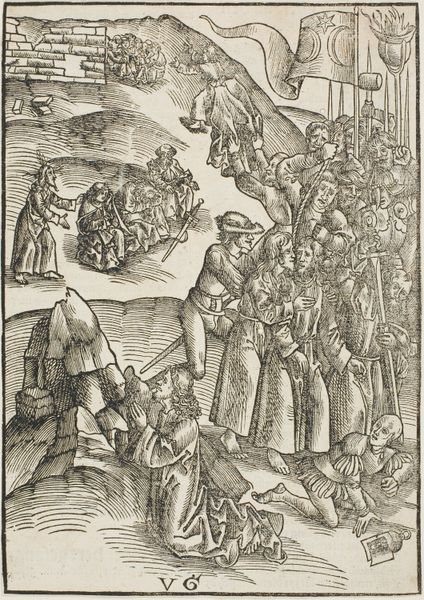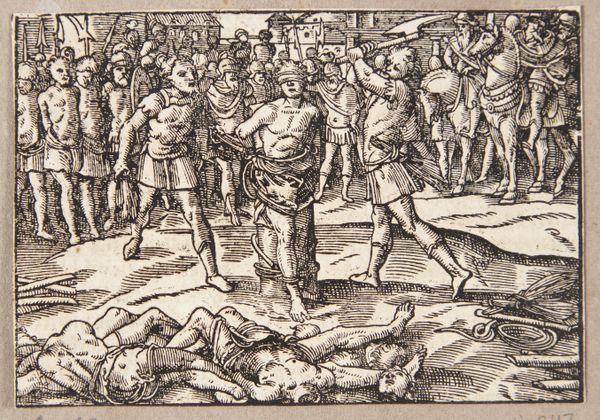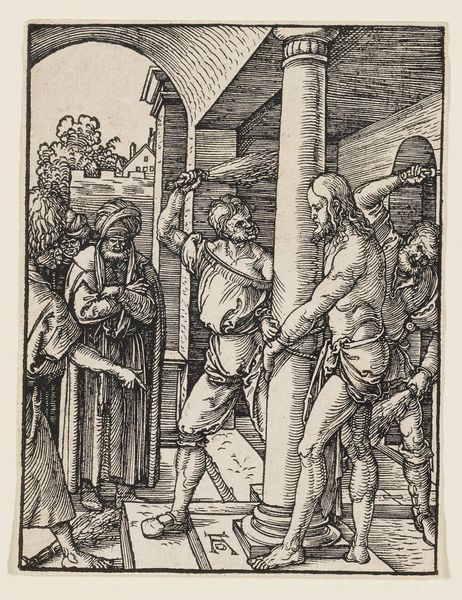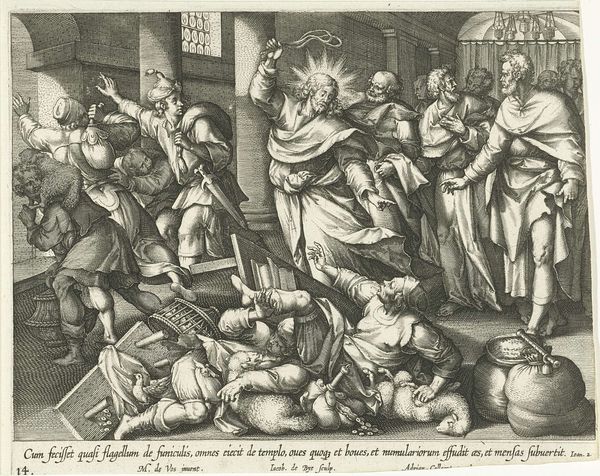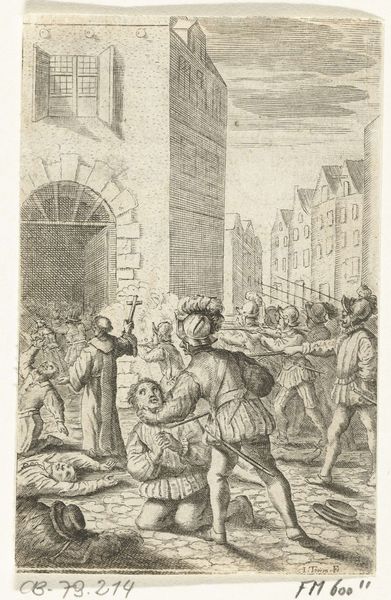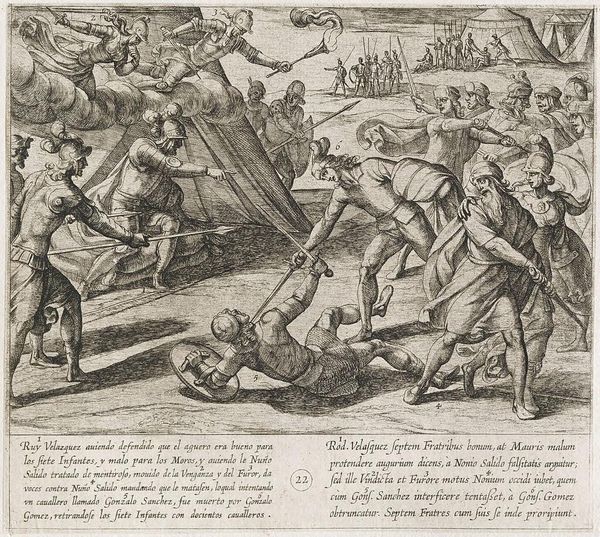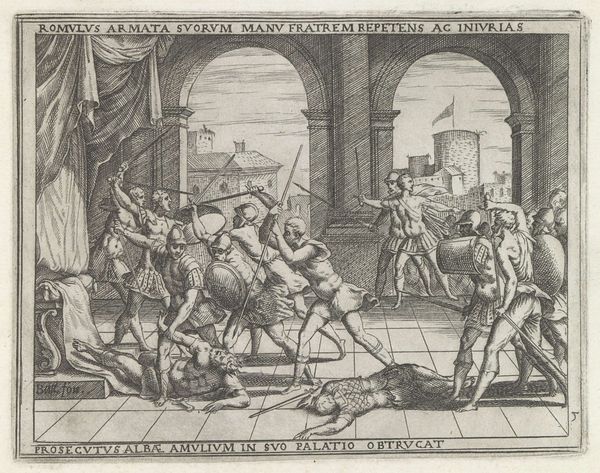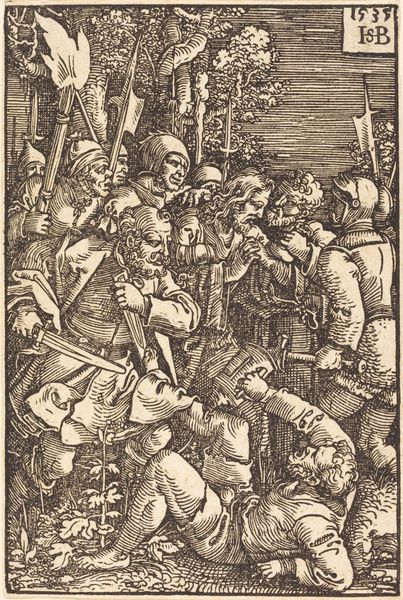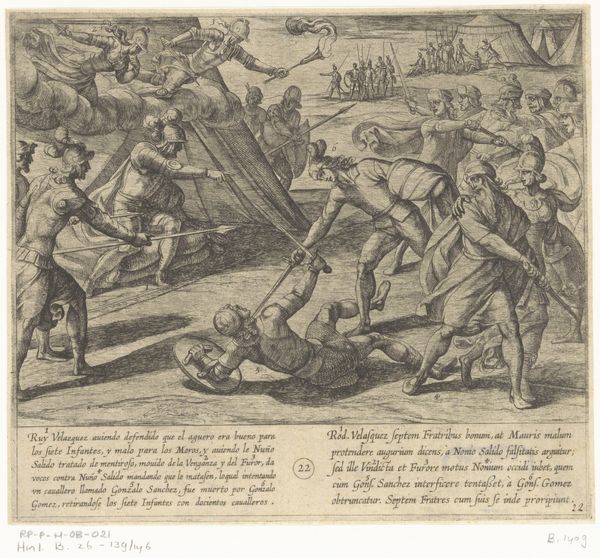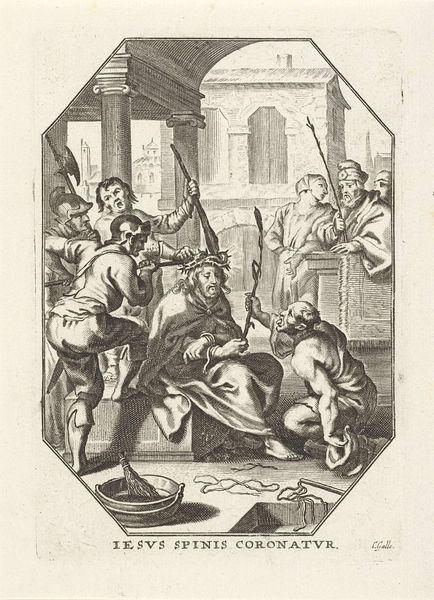
drawing, ink, engraving
#
drawing
#
narrative-art
#
baroque
#
figuration
#
ink
#
soldier
#
cityscape
#
genre-painting
#
engraving
Dimensions: height 111 mm, width 65 mm
Copyright: Rijks Museum: Open Domain
Curator: Abraham Dircksz. Santvoort created this drawing, an engraving rendered in ink, entitled "Gevecht in een dorp", or "Fight in a Village," in 1668. It's currently held here at the Rijksmuseum. Editor: Immediately, what strikes me is the absolute chaos of it all. A throng of figures dominates the frame, and the tight composition seems to amplify the energy of the struggle. It's almost overwhelming, quite violent even, especially given its modest size. Curator: Precisely, I think understanding the period it was created is critical. The 17th century in the Netherlands was a time of intense political and social upheaval. We see it visually, of course, in the active scene depicted with soldiers, skirmishes, cityscapes. But who is present? Who is missing? I would suggest we consider gendered violence in the ways war historically leaves women and children vulnerable and/or nameless. Editor: Yes, I agree. And artistically, Santvoort employs the hatching technique masterfully to convey that tension. Look how the density of the lines increases in areas of shadow, heightening the dramatic impact. The fallen figure in the foreground also really pulls you into the scene of a man struck in battle. It's a dark narrative rendered so dynamically. Curator: This focus on the chaos of war as a genre work offers a stark critique of its effects, decentering the heroic narratives often found in art of this period. Considering that The Netherlands was still consolidating power, especially among different religious factions, what message does the piece convey about civil stability? Editor: The setting is equally compelling, I find. The houses feel vulnerable amidst the fighting, with one dwelling curiously decorated with an angel sculpture. Perhaps an odd premonition, given how conflict tends to lay waste to everything in its path? Curator: In truth, looking at the broader narrative, it could underscore how war disrupts domesticity, destabilizing what should be stable: a village and, metaphorically, one's own house. The symbolism creates this rich reading of a universal story that plays out again and again in various forms across our cultural experiences. It becomes more than simply a moment captured. Editor: I see what you mean. The engraving then serves as a stark reminder of the ever-present threat to domestic spaces, a threat enacted both by external forces and by internal societal tensions. Curator: Exactly, and examining it this way offers invaluable lessons on the continuing cycles of political conflicts. It can guide our understanding of contemporary conflict. Editor: A fitting reminder indeed about conflict, no matter the medium or timeframe. Thank you.
Comments
No comments
Be the first to comment and join the conversation on the ultimate creative platform.
